|
Lee
and Karen Duquette, The Two RV Gypsies: Full-Time RVers at Columbia Glacier - Harbor Seals, Sea Lions, Sea Otters, Eagles and more (page 2 of 5) |
| The Columbia Glacier is a tidewater glacier descending from the Chugach Mountains to Prince William Sound, Alaska, on the south coast of the U.S. state of Alaska. It is one of several glaciers in the area named for elite U.S. colleges, in this case Columbia University, and was named by the Harriman Alaska Expedition in 1899. It is one of the fastest moving glaciers in the world, and has been retreating since the early 1980s. | |
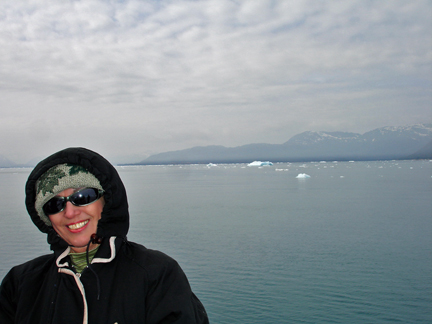 |
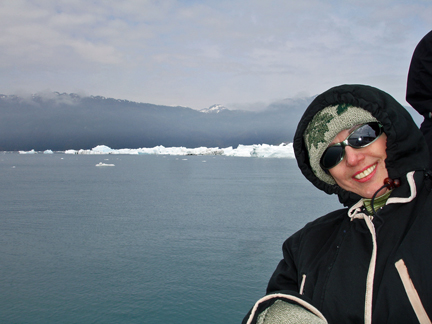 |
A glacier is a large mass
of ice moving slowly over some land surface or down a valley, formed over
long periods from the accumulation of snow in areas where the amount of
snow that falls exceeds the amount that melts. |
|
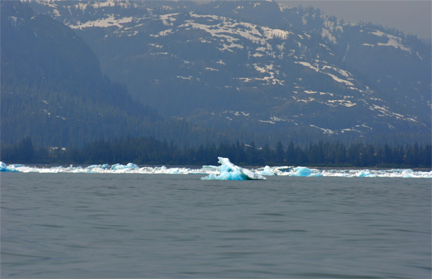 |
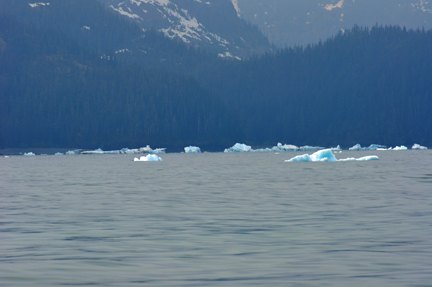 |
| Ice
chunks from the glacier start appearing in the water forming natural
floating ice sculptures. |
|
|
Glacier ice
has a slightly reduced density from ice formed from the direct freezing
of water. The air between snowflakes becomes trapped and creates air bubbles
between the ice crystals. The distinctive blue tint of glacial ice is
often wrongly attributed to Rayleigh scattering due to bubbles in the
ice. The blue color is actually created for the same reason that water
is blue, that is, its slight absorption of red light due to an overtone
of the infrared OH stretching mode of the water molecule. |
|
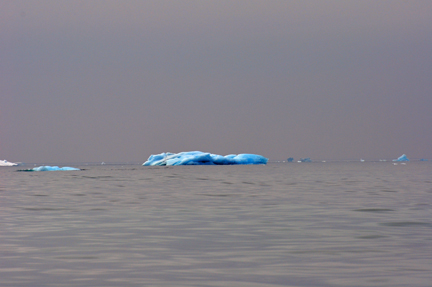 |
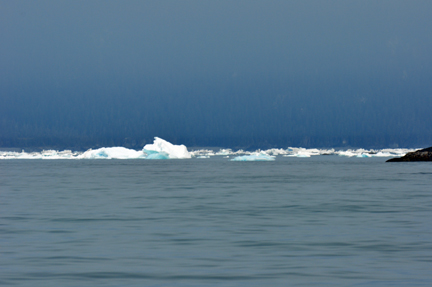 |
| Size: Presently, Columbia Glacier is approximately two kilometers wide, and 550 meters thick (1,800 feet), of which approximately 70 meters stands above sea level. The glacier is approximately 400 square miles in area and as of September 2006 approximately 32 miles in length, of which the last 15 kilometers rests on bedrock below sea level. Like all Alaskan tidewater glaciers, the ice is not floating but is resting on bedrock below sea level, with a significant fraction of its weight supported by buoyancy. | |
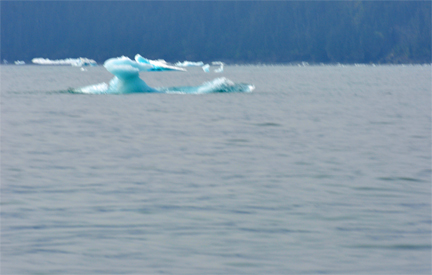 |
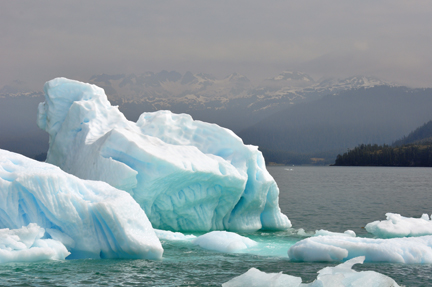 |
Below: Lee Duquette holding
a chunk of ice from the water that was brought aboard the ship |
|
 |
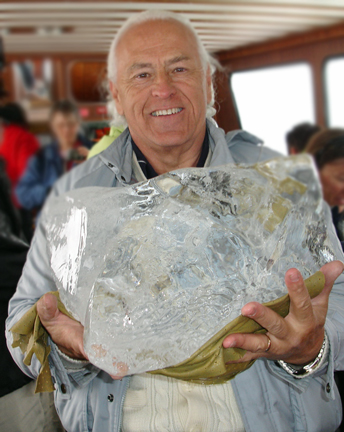 |
| Retreat: Speed at the terminus reached a maximum of nearly 30 meters per day in 2001, when the glacier was discharging icebergs at approximately seven cubic kilometers per year; the glacier has subsequently slowed down, resulting in an increase in retreat rate. The terminus has retreated a total of 16 kilometers at an average rate of approximately 0.6 kilometers per year since 1982. Retreat has been accompanied by nearly 500 meters of thinning at the present position of the terminus. In the next few decades it is expected to retreat another 15 kilometers, to a point where the bed of the glacier rises above sea level. Tidewater glacier advance and retreat is not directly forced by climate (adjacent tidewater glaciers may be simultaneously advancing and retreating), but rapid retreat appears to be triggered by climate-forced long-term thinning. | |
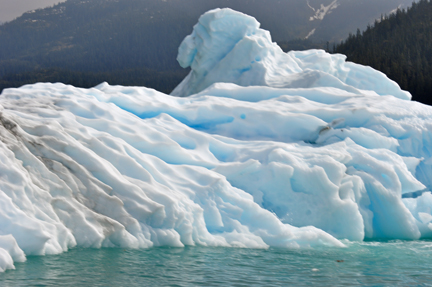 |
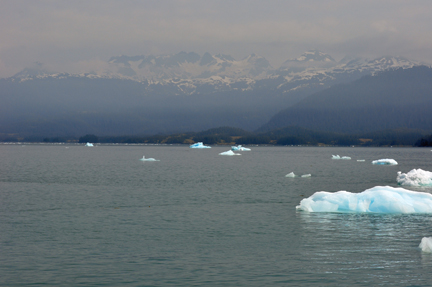 |
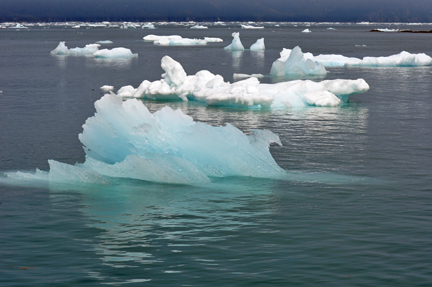 |
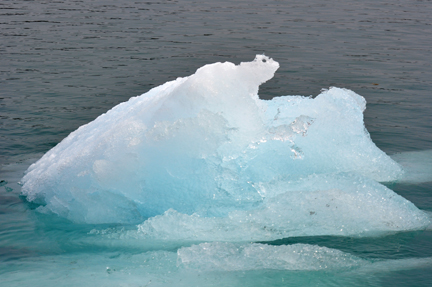 |
Columbia Glacier itself
was unreachable due to the massive amount of ice chunks that have fallen
previously. |
|
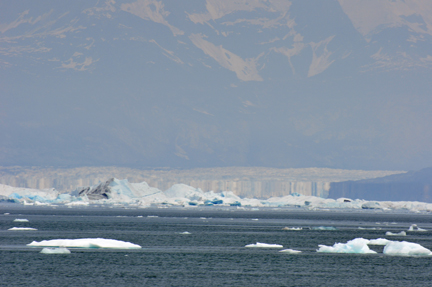 |
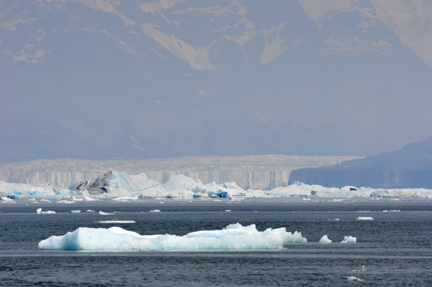 |
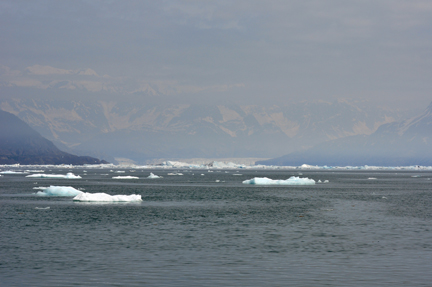 |
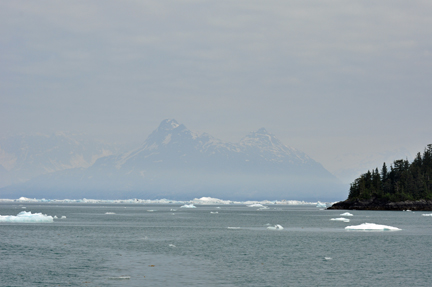 |
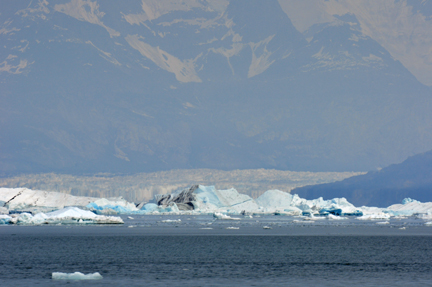 |
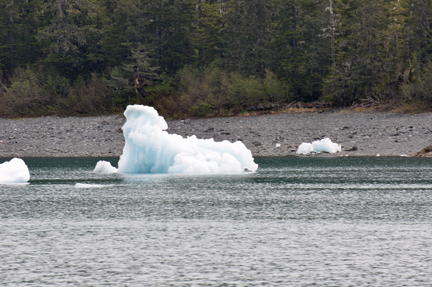 |
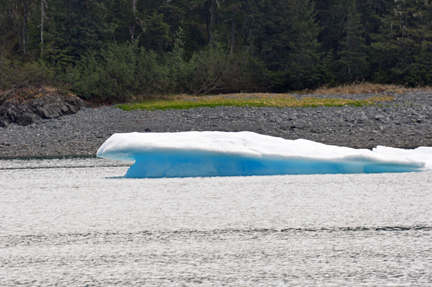 |
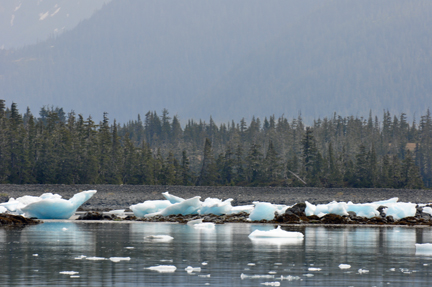 |
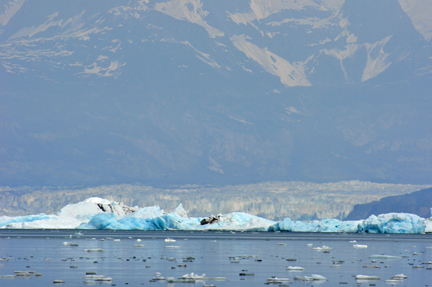 |
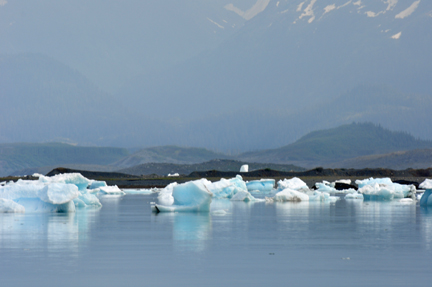 |
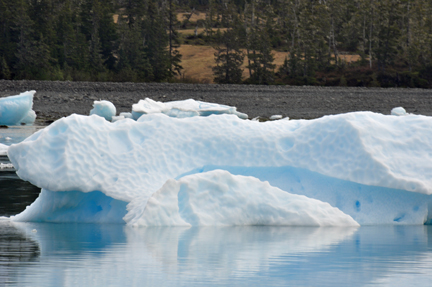 |
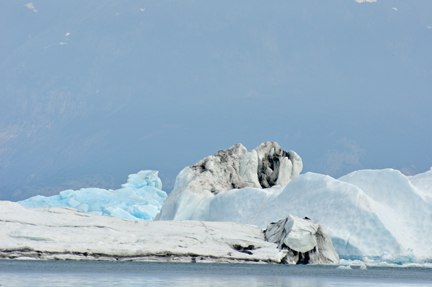 |
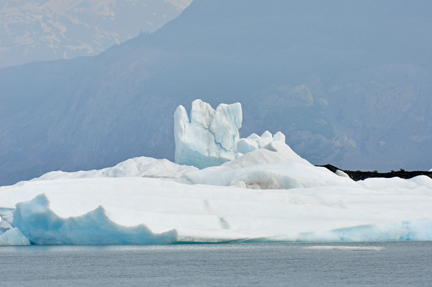 |
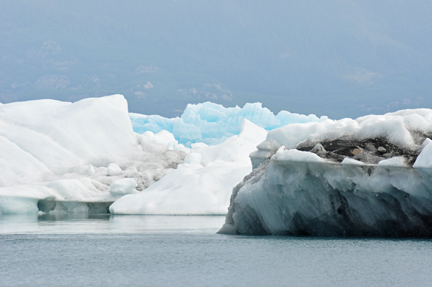 |
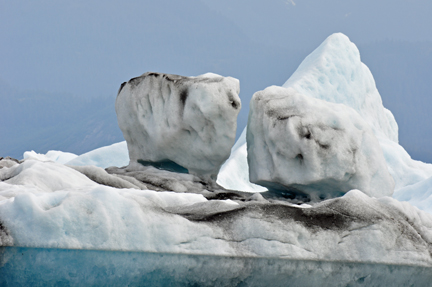 |
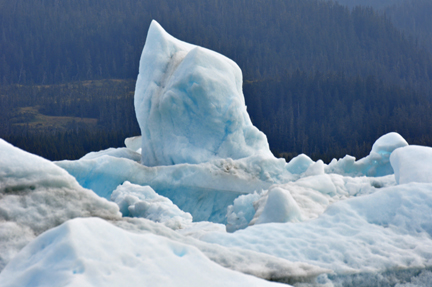 |
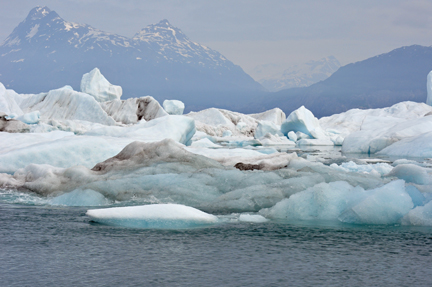 |
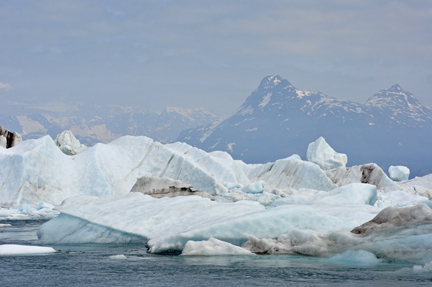 |
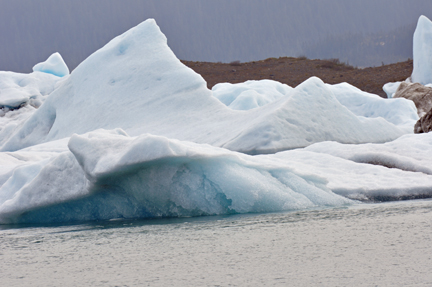 |
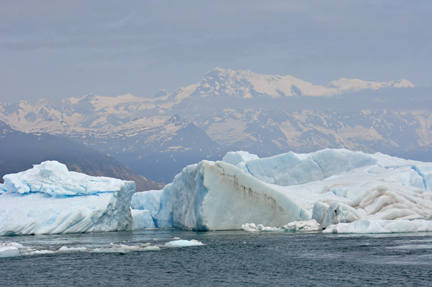 |
Below: A bird on top of
the iceberg |
|
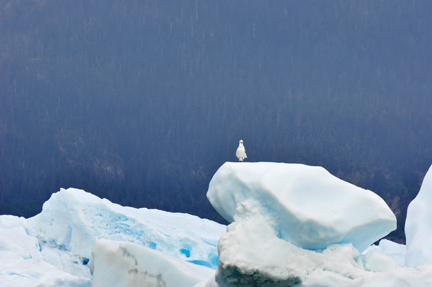 |
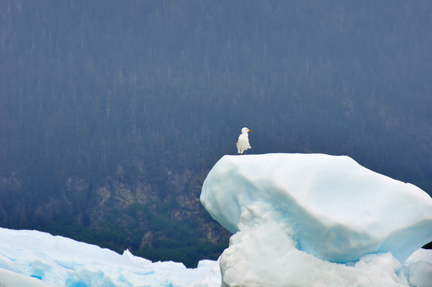 |
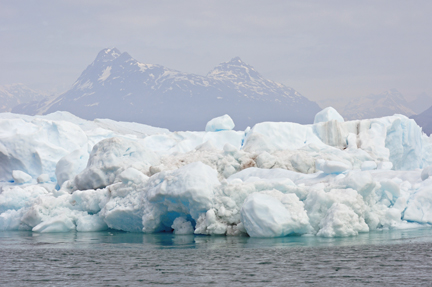 |
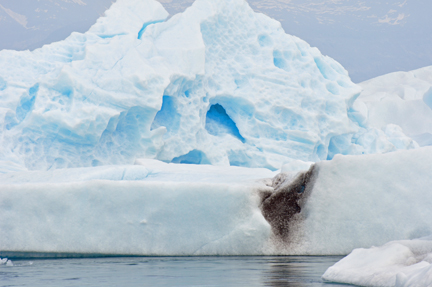 |
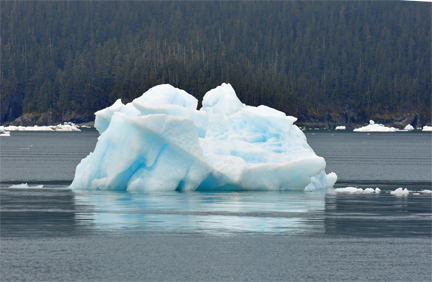 |
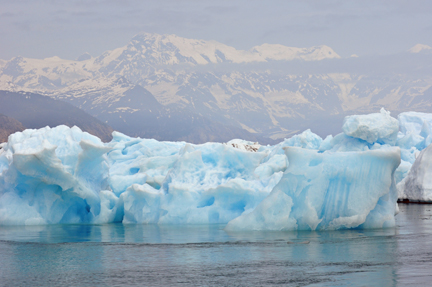 |
Below: A BALD EAGLE on
the iceberg |
|
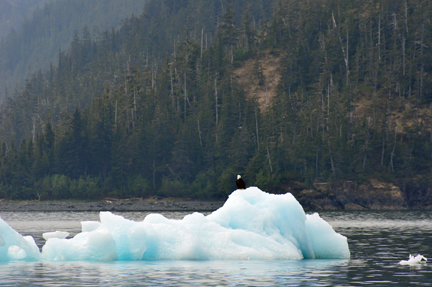 |
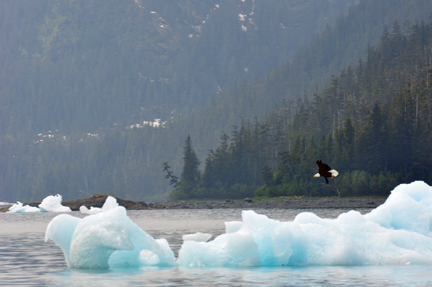 |
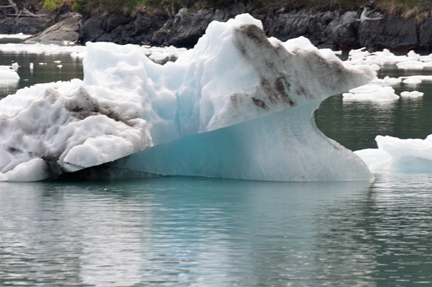 |
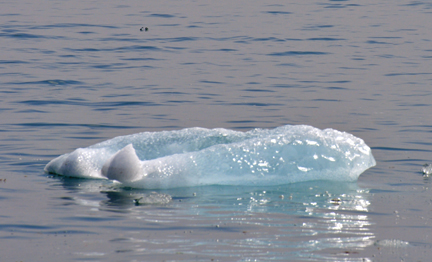 |
| The Columbia Glacier and the Meares Glacier are very different from each other - as you will see in photos as you continue through this journey. | |
